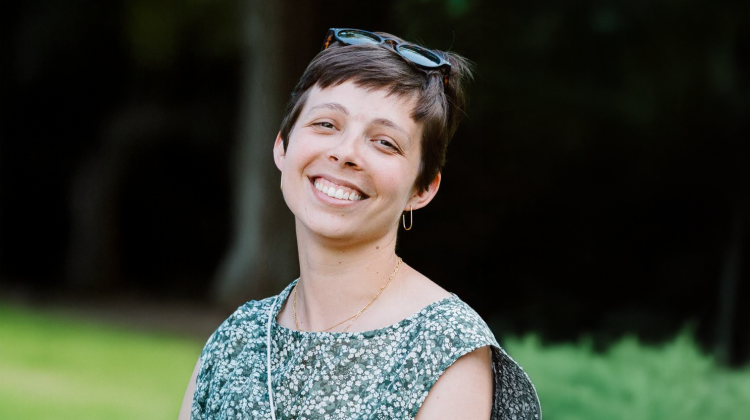Xio Alvarez

Learn from your peers and your mistakes rather than chasing someone else’s idea of success. Architecture school is about experimentation, collaboration, and asking questions. The more you ask, the more you’ll get out of your education.
What is your career story? How did you get where you are today?
I graduated from MIT in Spring 2021 with a joint degree in architecture and urban planning. Since then, I’ve been working at LMN Architects. We’re a single-office firm with about 150 people, which is quite large for a single-office setup. We focus on larger civic-scale projects like higher ed campus buildings, transit stations, zoos/aquariums, and urban mixed-use developments. Before grad school, I did my undergrad in Urban Studies and spent a few years working in development technology, focusing on open data, building public data publishing platforms, processes, and storytelling.
It’s been an interesting time to be in the design field, with the pandemic and a small recession affecting the industry. I’m currently working on getting licensed and also do extracurricular activities with AIA and volunteering.
What were the biggest skills/mindsets/approaches you took away from your architecture education?
One of the biggest takeaways was learning how to recognize that the things we build are embedded with histories and political statements. I took a class with Larry Vale on urban design politics, which explored how built environments reflect political positions and powers over time. That idea has become a thread through my work.
Part of what is exciting about architecture is that every place is a record of a whole history of different architectural and political ideas about what that place could be. Any building project I’m on is a representation of how the firm views itself and the community it’s serving. It’s not just about building systems—it’s about ideas and storytelling. A good project should communicate or tell a story. It should also anticipate what a client needs now and how those needs might evolve.
At MIT, we talked a lot about sustainability and innovations in materials. While I learned more about building systems like natural ventilation in practice than in school, the sense of embedding values into design came from my education.
Can you give me an example of when you’ve used these skills?
Sometimes, when a problem feels particularly hard or complicated, I like to start with the “worst ideas first” approach. This is something I picked up in grad school. My classmates and I would intentionally put the worst idea on paper to get it out of our heads. We’d explore solutions that solved one problem but failed overall—ideas we knew wouldn’t work.
Once those “bad ideas” were out there, we’d work backward and tweak them. It’s a way of overcoming blank-page syndrome and thinking creatively without trying to find the perfect solution on the first try. This approach, combined with MIT’s “kill your darlings” mentality, taught me to let go of ideas that don’t work—even if I love them. Being able to say, “Cool, we won’t do it,” and move on is so important in collaborative design.
MIT also ingrained in me a research-oriented approach to design. I dive deep into understanding the client, the environment, and the context for a project. Not every firm prioritizes this level of research, but it’s a core part of my practice and helps me connect with the client’s needs.
What do you wish you had learned in your design education?
Some of my colleagues who went to state schools got a much more practical architecture education. I purposefully chose a program that was more theory-oriented, but now I can recognize some of the ways I wasn’t fully prepared for the technical aspects of the job. For example, I didn’t take BIM or HVAC-focused classes, and I sometimes struggle with those areas now. In retrospect, I wish I had taken more technical classes or learned more from the people who excelled at those things.
What’s something you hated learning about that you now love?
I wasn’t very good at structures during school, but now I really enjoy working with structural engineers. I’ve come to value how the structural system of a building can harmonize with the overall design. Some of the best projects at my current firm are the ones where we’re tight with the structural engineer, working toward the same goal. I love talking to them and seeing how they explain complex concepts to non-engineers—it’s something that surprised me but now brings me a lot of joy.
Knowing what you know now, would you do undergrad/grad differently?
Not really. COVID happened during my time in grad school, which was a bummer, but I feel like I got what I wanted out of the experience. It was hard, and there were all sorts of things happening at school during that time, but I wouldn’t change much about what I did. I really loved doing the dual degree and appreciate how having both sides of the practice informs my personal work. MIT was my dream school, and I feel lucky to have been there. I also received a full financial aid package, which was a huge help—no massive debt weighing me down.
What advice do you have for students starting out in design?
Take Larry Vale’s class. Seriously. Beyond that, remember that there’s a version of architectural education that can feel very competitive and critique-heavy, with a narrow view of what “good” or “beautiful” work looks like. What I loved about MIT was the mindset of trying things, making mistakes, and getting messy. Embrace that spirit. It’s far more valuable than buying into a competitive culture.
Learn from your peers and your mistakes rather than chasing someone else’s idea of success. Architecture school is about experimentation, collaboration, and asking questions. The more you ask, the more you’ll get out of your education. Use it as an opportunity to explore ideas and develop a skillset for approaching questions in the world.


